
SHERLOCK HOLMES' FATAL HOUR
B&W, 1931, 81 mins. 20 secs.
Directed by Leslie S. Hiscott
Starring Arthur Wontner, Ian Fleming, Minnie Rayner, Leslie Perrins, Jane Welsh
A STUDY IN SCARLET
B&W, 1933, 72 mins. 8 secs.
Directed by Edwin L. Marin
Starring Reginald Owen,
Anna May Wong, June Clyde, Alan Dinehart, John Warburton, Alan Mowbray, Warburton Gamble
THE TRIUMPH OF SHERLOCK HOLMES
B&W, 1935, 83 mins.
Directed by Leslie S. Hiscott
Starring Arthur Wortner, Ian Fleming, Leslie Perrins, Jane Carr, Charles Mortimer
SILVER BLAZE
B&W,1937, 69 mins. 58 secs.
Directed by Thomas Bentley
Starring Arthur Wontner, Ian Fleming, Lyn Harding, John Turnbull, Minnie Rayner
The Film Detective (Blu-ray) (US R0 HD)
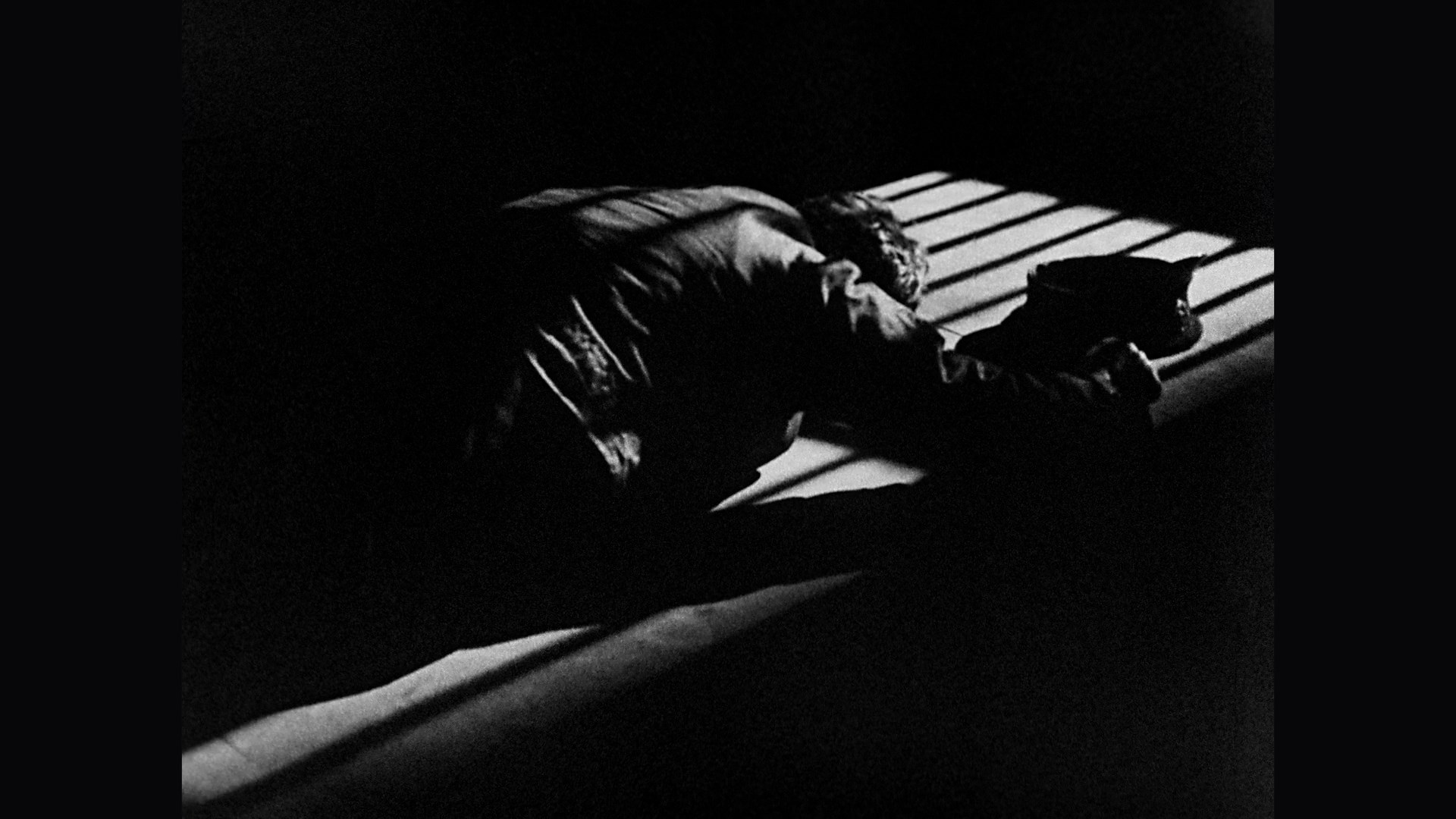 is attempting to rectify with its four-disc Blu-ray set, Sherlock Holmes: The Vault Collection, rescuing a handful of worthy titles from dupey public domain neglect with a hefty batch of bonus features to boot.
is attempting to rectify with its four-disc Blu-ray set, Sherlock Holmes: The Vault Collection, rescuing a handful of worthy titles from dupey public domain neglect with a hefty batch of bonus features to boot. 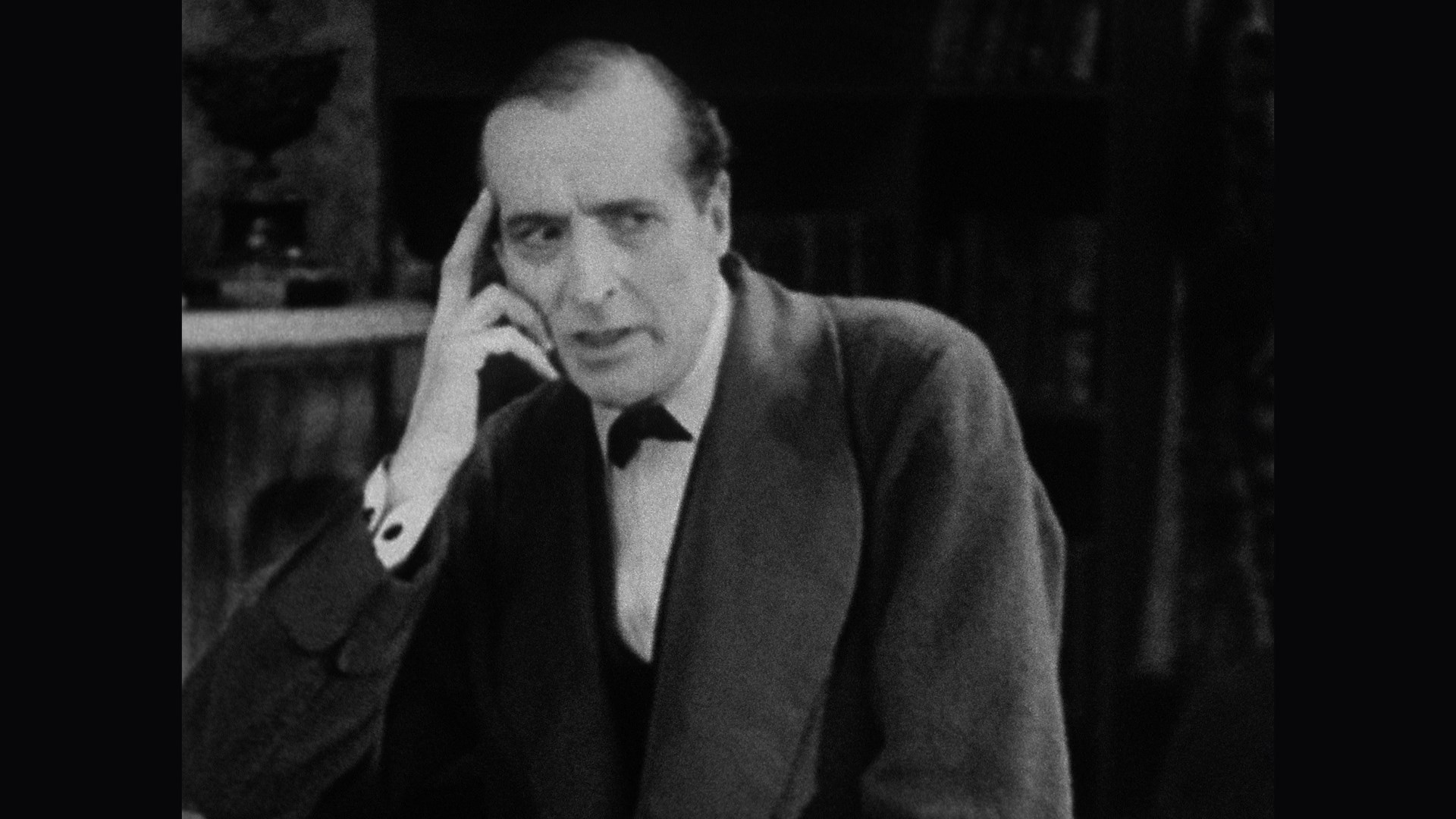 The first talkie U.K. Holmes films arrived in 1931 (mere months after Doyle's death) with Arthur Wontner playing the consulting detective in a total of five films, one of which (The Missing Rembrandt) is now considered lost. Three of the remainders (minus The Sign of the Four, which is out there elsewhere) are compiled here along with another one-off title, providing a fascinating look at how the portrayal of Holmes was shaped throughout the decade.
The first talkie U.K. Holmes films arrived in 1931 (mere months after Doyle's death) with Arthur Wontner playing the consulting detective in a total of five films, one of which (The Missing Rembrandt) is now considered lost. Three of the remainders (minus The Sign of the Four, which is out there elsewhere) are compiled here along with another one-off title, providing a fascinating look at how the portrayal of Holmes was shaped throughout the decade.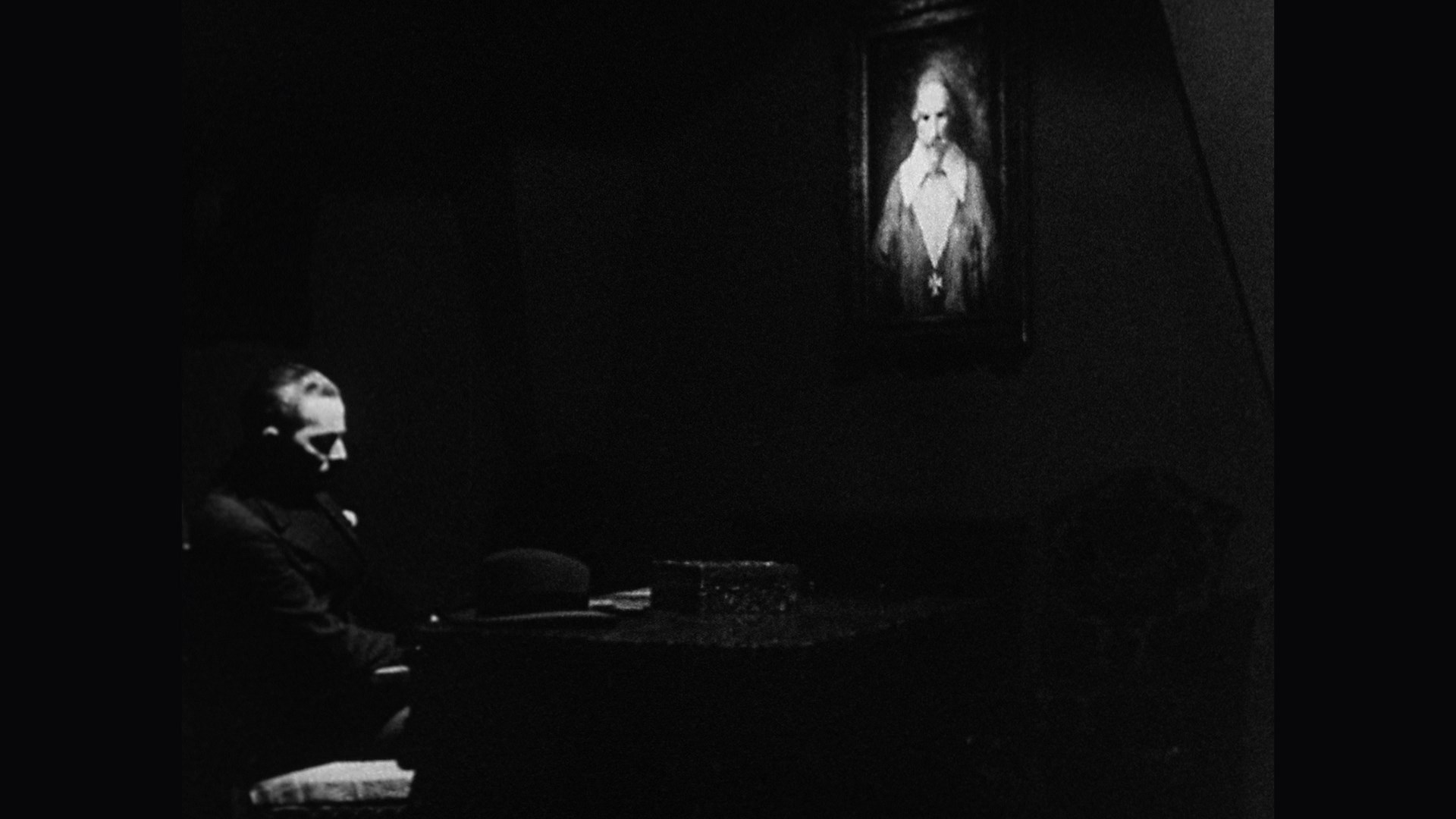 aspect ratio of 1.20:1 that was still hanging around at that point), this is obviously a
aspect ratio of 1.20:1 that was still hanging around at that point), this is obviously a 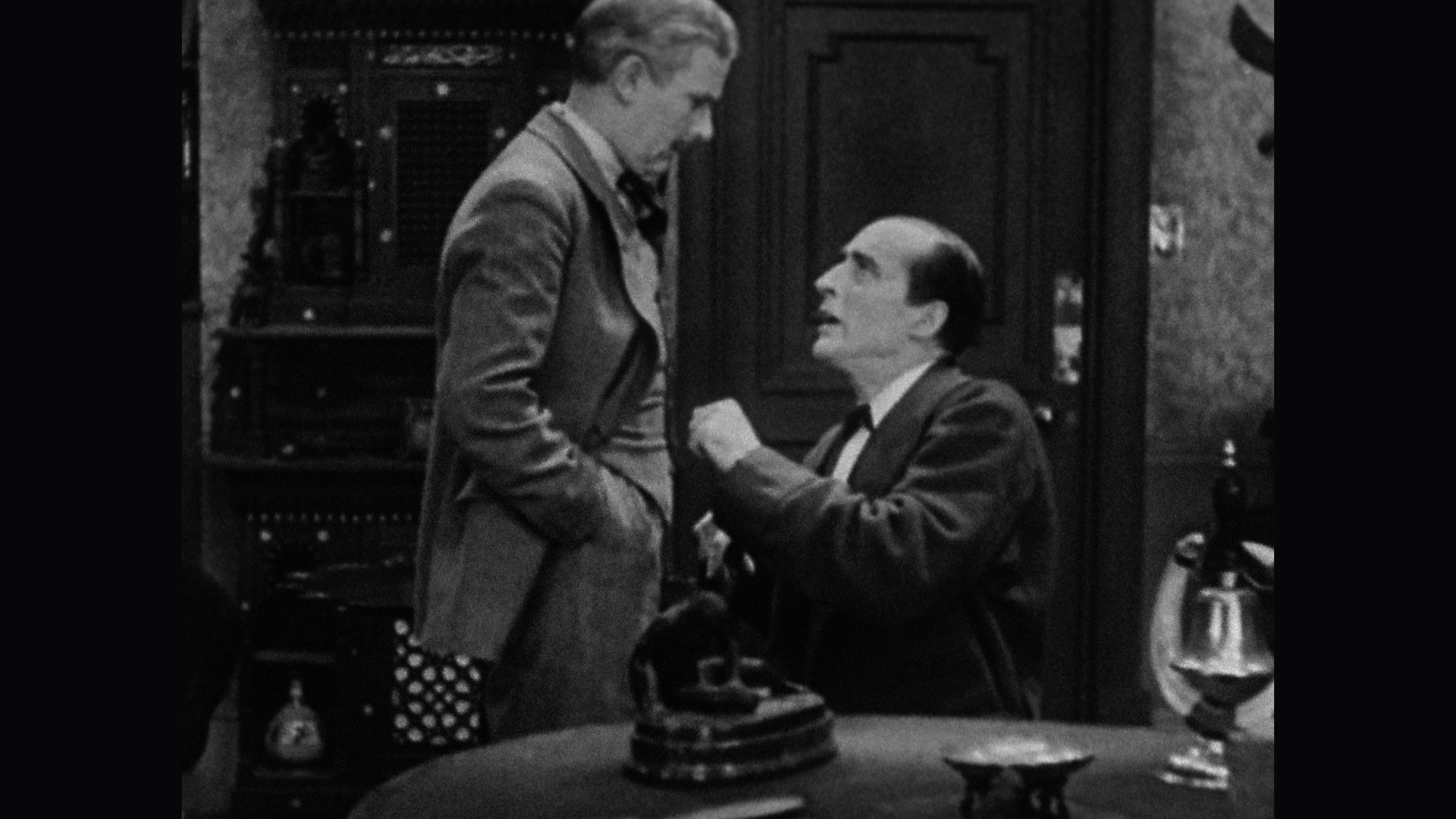 stagier Holmes than what we're used to but still a very worthwhile viewing experience for the star performance and those little dashes of visual style. The climax is actually nicely handled as well with Holmes undertaking a battle of wits with his nemesis under constrained circumstances, and the story has enough twists and turns to keep you engaged. Given that there's only one element left in existence, the Blu-ray is about as good as it's going to get and watchable enough given its rarity and vintage. The English audio is lossy Dolby Digital (as with the others in the set) which would normally be a minus here but not all that big a deal given that this comes from an aged print. Optional English and Spanish subtitles are provided for the feature as well as the audio commentary by Jennifer Churchill, who chats about various Sherlockiana tidbits connected to the film as well as the backgrounds of the major players. There's a fair amount of silent gaps here but what she does offer is definitely handy. First up in the video extras is a new radio production of Sherlock Holmes and the Blue Carbuncle from Redfield Arts Audio (39m47s), offering a solid dramatization of the perennial Christmastime mystery tale. In The Adventures of Sam Sherman Part One (7m40s), the Independent-International head chats about how he first encountered the films and tried to figure out where they wandered off to after their appearances on New York TV in the '50s. Then you get two versions of the 1918 short A Black Sherlock Holmes (14m38s and 13m24s), or rather what remains of it since it's more like a moving slideshow given the extensive amount of damage. 1900's Sherlock Holmes Baffled (38s) is a very quick silent blackout sketch involving trick photography. Also included is an insert booklet with an essay by Don Stradley
stagier Holmes than what we're used to but still a very worthwhile viewing experience for the star performance and those little dashes of visual style. The climax is actually nicely handled as well with Holmes undertaking a battle of wits with his nemesis under constrained circumstances, and the story has enough twists and turns to keep you engaged. Given that there's only one element left in existence, the Blu-ray is about as good as it's going to get and watchable enough given its rarity and vintage. The English audio is lossy Dolby Digital (as with the others in the set) which would normally be a minus here but not all that big a deal given that this comes from an aged print. Optional English and Spanish subtitles are provided for the feature as well as the audio commentary by Jennifer Churchill, who chats about various Sherlockiana tidbits connected to the film as well as the backgrounds of the major players. There's a fair amount of silent gaps here but what she does offer is definitely handy. First up in the video extras is a new radio production of Sherlock Holmes and the Blue Carbuncle from Redfield Arts Audio (39m47s), offering a solid dramatization of the perennial Christmastime mystery tale. In The Adventures of Sam Sherman Part One (7m40s), the Independent-International head chats about how he first encountered the films and tried to figure out where they wandered off to after their appearances on New York TV in the '50s. Then you get two versions of the 1918 short A Black Sherlock Holmes (14m38s and 13m24s), or rather what remains of it since it's more like a moving slideshow given the extensive amount of damage. 1900's Sherlock Holmes Baffled (38s) is a very quick silent blackout sketch involving trick photography. Also included is an insert booklet with an essay by Don Stradley 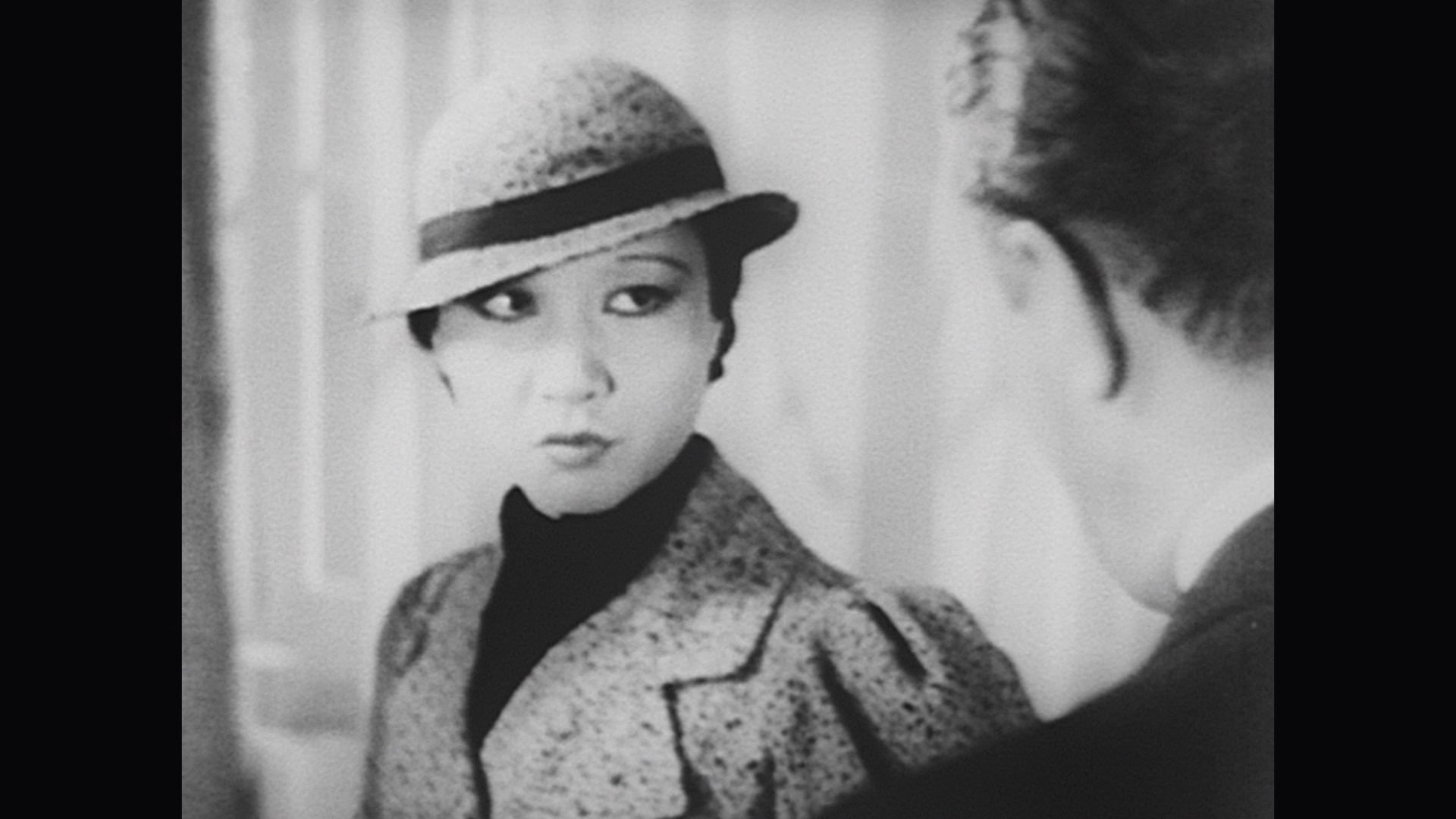 about
about 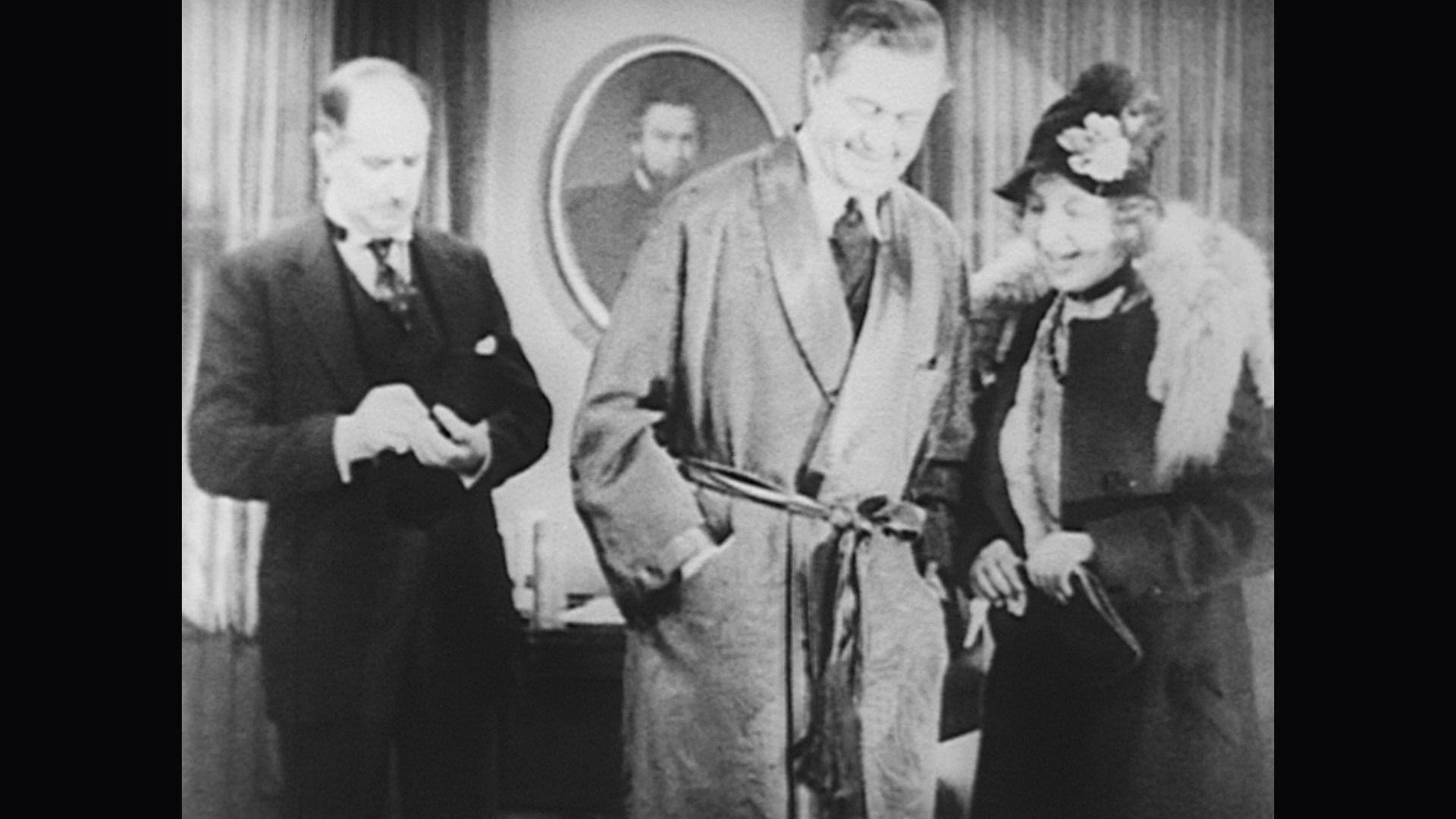 Wontner's background and the film's theatrical release.
Wontner's background and the film's theatrical release. 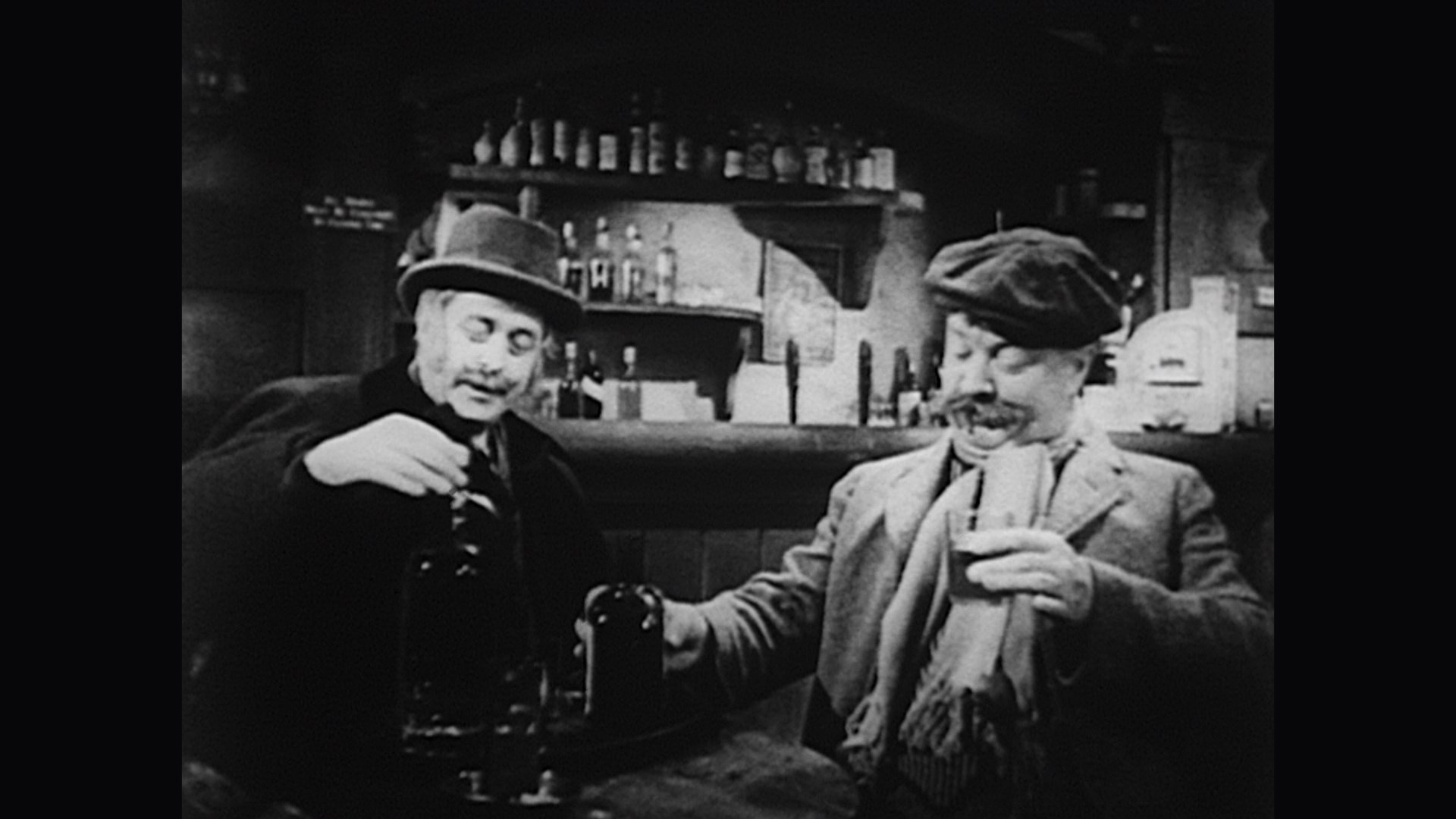 years.
years. 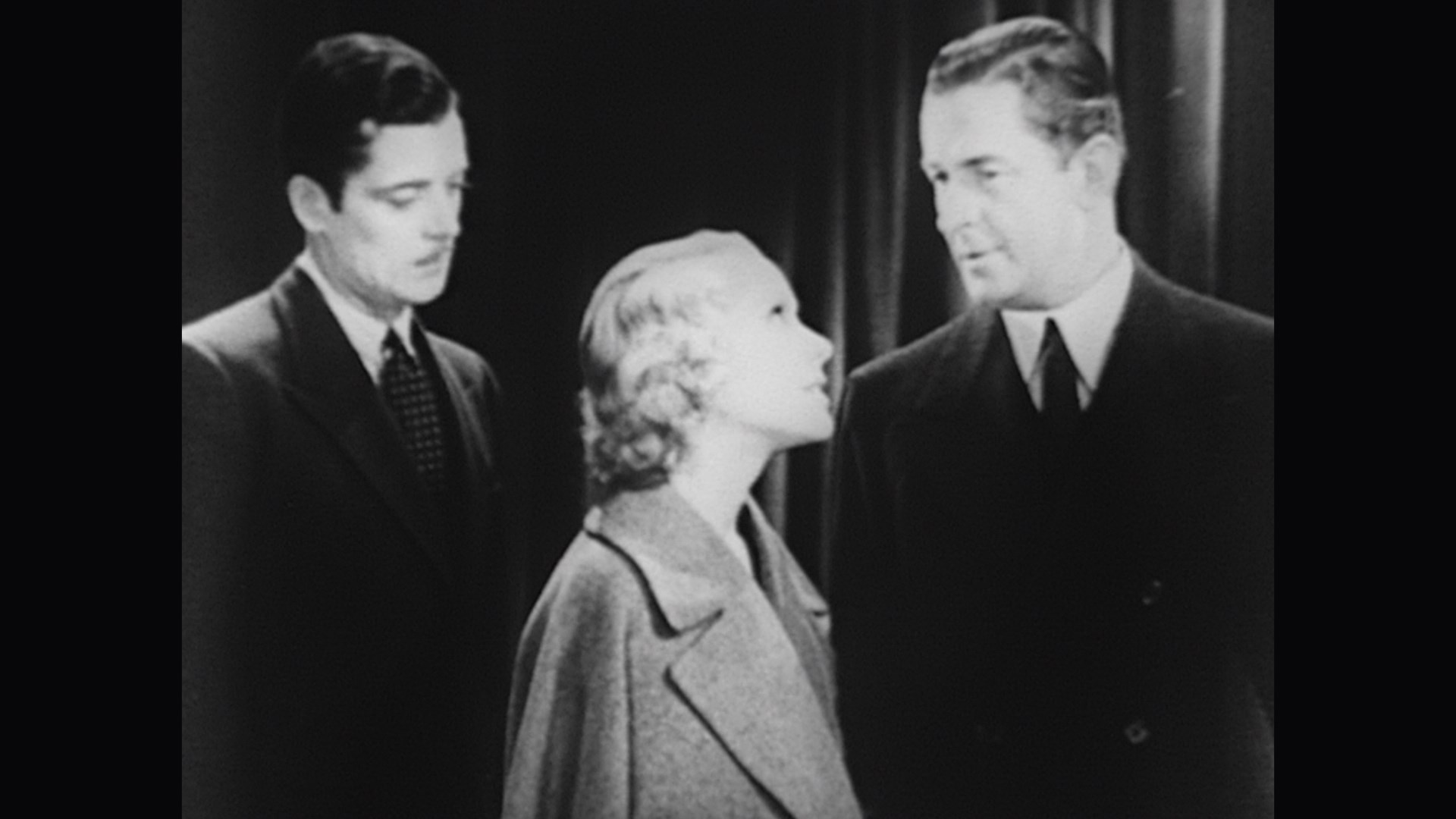 The film also comes with an audio commentary by authors-screenwriters Peter Atkins and David Breckman who talk about Twickenham Studios, the nature of early poverty row filmmaking, the variations from the novel, and the various actors in the film. Unfortunately the audio from the film itself is running behind them throughout and tends to get loud at times, so it's hard to make out what they're saying now and then. Elementary Cinema: The First Cinematic Adventures of Sherlock Holmes (26m29s) takes a look at Doyle's life and the nascent cinematic attempts at bringing his most famous creation to life, not always with initially great results (including some other early titles not included here like The Speckled Band). Also included is Slick Sleuths (7m15s), a 1926 animated short with Mutt and Jeff doing their best Holmes and Watson routines in search of a nefarious villain called The Phantom. C. Courtney Joyner provides the liner notes this time for a very interesting look at why this story has been so seldom adapted, primarily for its depiction of Mormonism and a variety of legal snags.
The film also comes with an audio commentary by authors-screenwriters Peter Atkins and David Breckman who talk about Twickenham Studios, the nature of early poverty row filmmaking, the variations from the novel, and the various actors in the film. Unfortunately the audio from the film itself is running behind them throughout and tends to get loud at times, so it's hard to make out what they're saying now and then. Elementary Cinema: The First Cinematic Adventures of Sherlock Holmes (26m29s) takes a look at Doyle's life and the nascent cinematic attempts at bringing his most famous creation to life, not always with initially great results (including some other early titles not included here like The Speckled Band). Also included is Slick Sleuths (7m15s), a 1926 animated short with Mutt and Jeff doing their best Holmes and Watson routines in search of a nefarious villain called The Phantom. C. Courtney Joyner provides the liner notes this time for a very interesting look at why this story has been so seldom adapted, primarily for its depiction of Mormonism and a variety of legal snags. 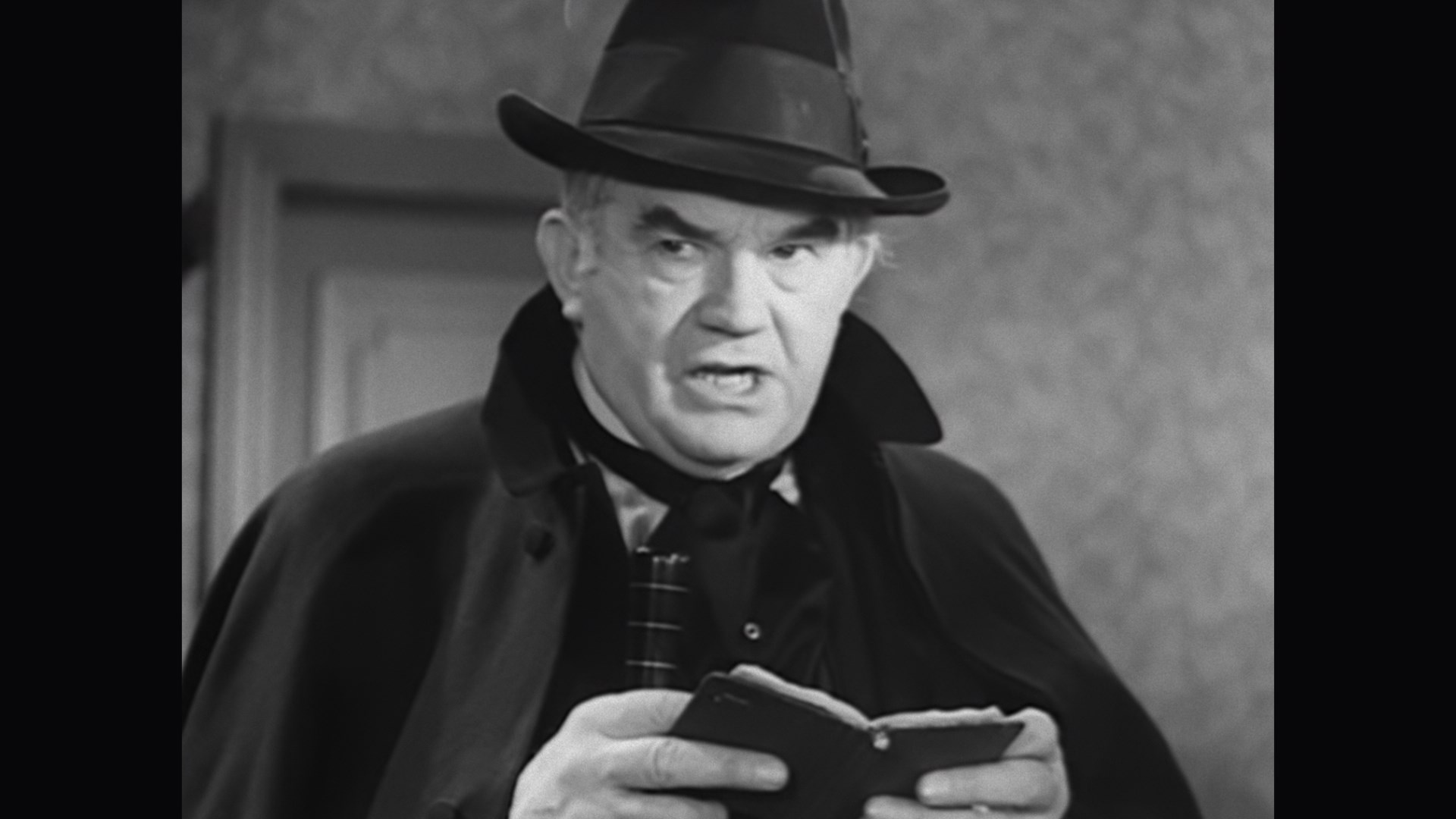
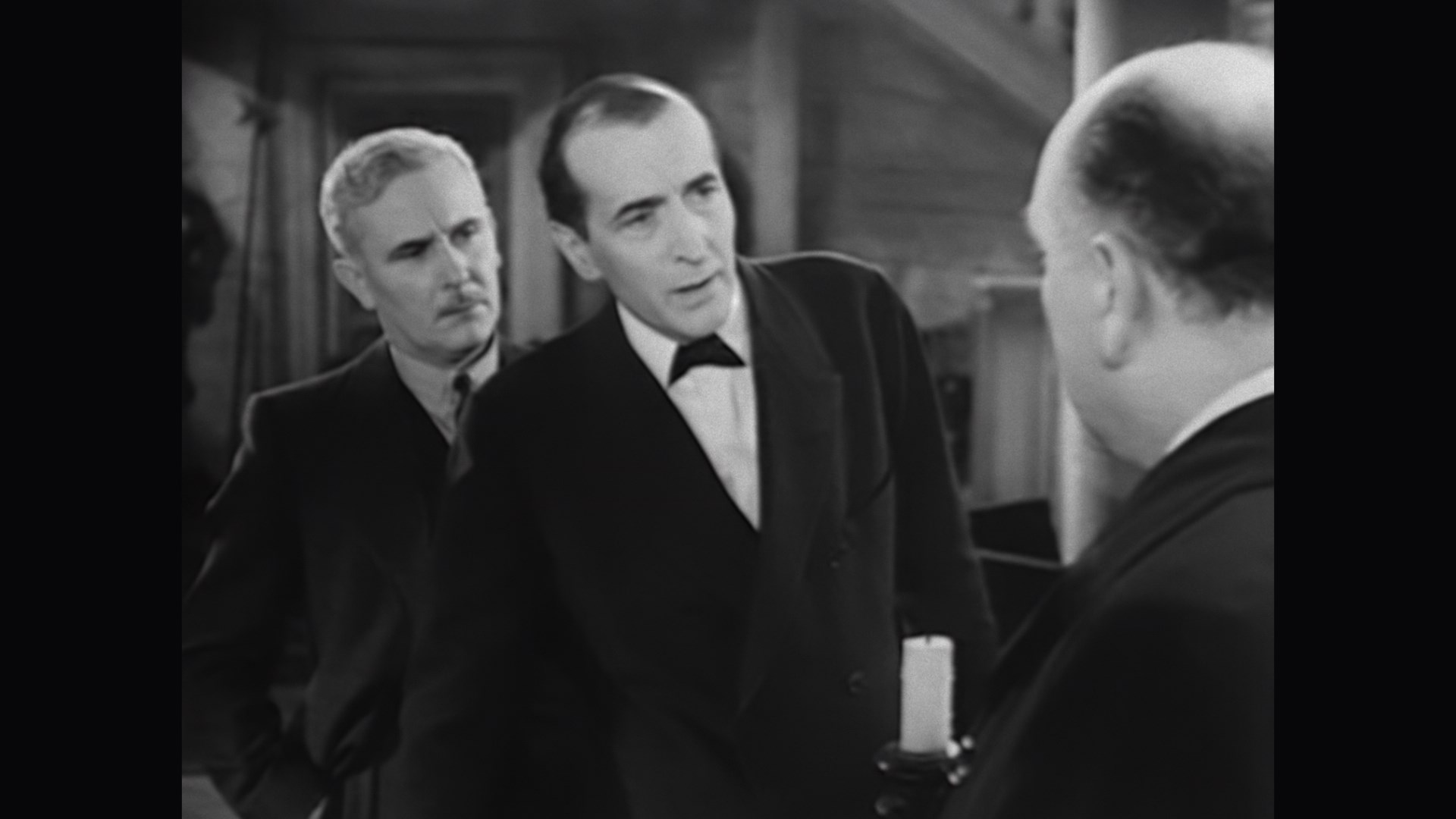 Now it's back to Wontner with 1935's The Triumph of Sherlock Holmes, this time a surprisingly faithful adaptation of The Valley of Fear and arguably the star's best turn in the role. This time Moriarty (Harding, who's quite good) is out in the open and pining to get Sherlock Holmes out of retirement... but how? Moriarty decides to take advantage of "an American society who wishes to remove one of its members," which involves a $50,000 fee, the mysterious death of a man at his estate, regular Holmes character Colonel Moran, and a lengthy flashback involving a gang called the Scowlers. The quality of this one (and the fourth film in the set) is by far the best this has looked on home video, though you should still keep your expectations in check as it's still soft and, given the absence of visible film grain or damage, the recipient of visible noise reduction.
Now it's back to Wontner with 1935's The Triumph of Sherlock Holmes, this time a surprisingly faithful adaptation of The Valley of Fear and arguably the star's best turn in the role. This time Moriarty (Harding, who's quite good) is out in the open and pining to get Sherlock Holmes out of retirement... but how? Moriarty decides to take advantage of "an American society who wishes to remove one of its members," which involves a $50,000 fee, the mysterious death of a man at his estate, regular Holmes character Colonel Moran, and a lengthy flashback involving a gang called the Scowlers. The quality of this one (and the fourth film in the set) is by far the best this has looked on home video, though you should still keep your expectations in check as it's still soft and, given the absence of visible film grain or damage, the recipient of visible noise reduction. 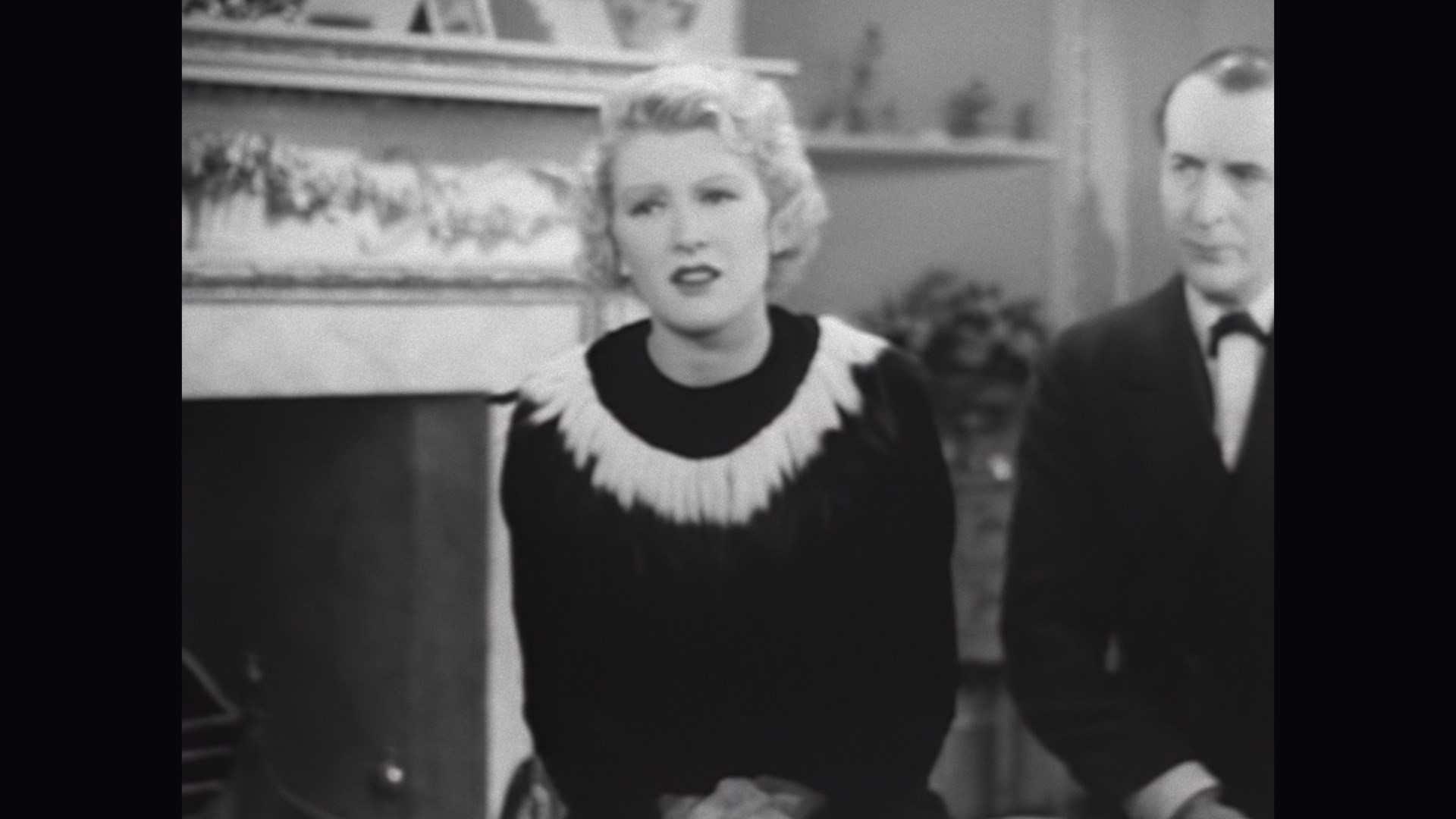 throughout pop culture, the budgetary constraints at play here, the critical reception to
throughout pop culture, the budgetary constraints at play here, the critical reception to  these films at the time, and plenty more. The video extras start with 1912's The Cooper Beeches (19m10s), a two-part silent serial based on the Doyle story that doesn't introduce our hero until halfway through. It's in very nice quality and comes with a period-appropriate music score. The Adventures of Sam Sherman Part Two (6m8s) continues his appraisal of the Wontner series with memories of his first TV viewing and his justifiable opinion of this as the best of the bunch. Finally 1954's The Case of the Blind Man's Bluff (26m30s) is a bonus TV episode from the single-season Sherlock Holmes series with Ronald Howard as Holmes recruited to investigate a stabbing murder outside a sea tavern involving a sinister chicken's foot and a sword cane. (Note the packaging and menu erroneously cite this one as 1964.) Extra weird points here for what may be the only Holmes adventure where you have to see Watson (played by Howard Marion-Crawford of
these films at the time, and plenty more. The video extras start with 1912's The Cooper Beeches (19m10s), a two-part silent serial based on the Doyle story that doesn't introduce our hero until halfway through. It's in very nice quality and comes with a period-appropriate music score. The Adventures of Sam Sherman Part Two (6m8s) continues his appraisal of the Wontner series with memories of his first TV viewing and his justifiable opinion of this as the best of the bunch. Finally 1954's The Case of the Blind Man's Bluff (26m30s) is a bonus TV episode from the single-season Sherlock Holmes series with Ronald Howard as Holmes recruited to investigate a stabbing murder outside a sea tavern involving a sinister chicken's foot and a sword cane. (Note the packaging and menu erroneously cite this one as 1964.) Extra weird points here for what may be the only Holmes adventure where you have to see Watson (played by Howard Marion-Crawford of 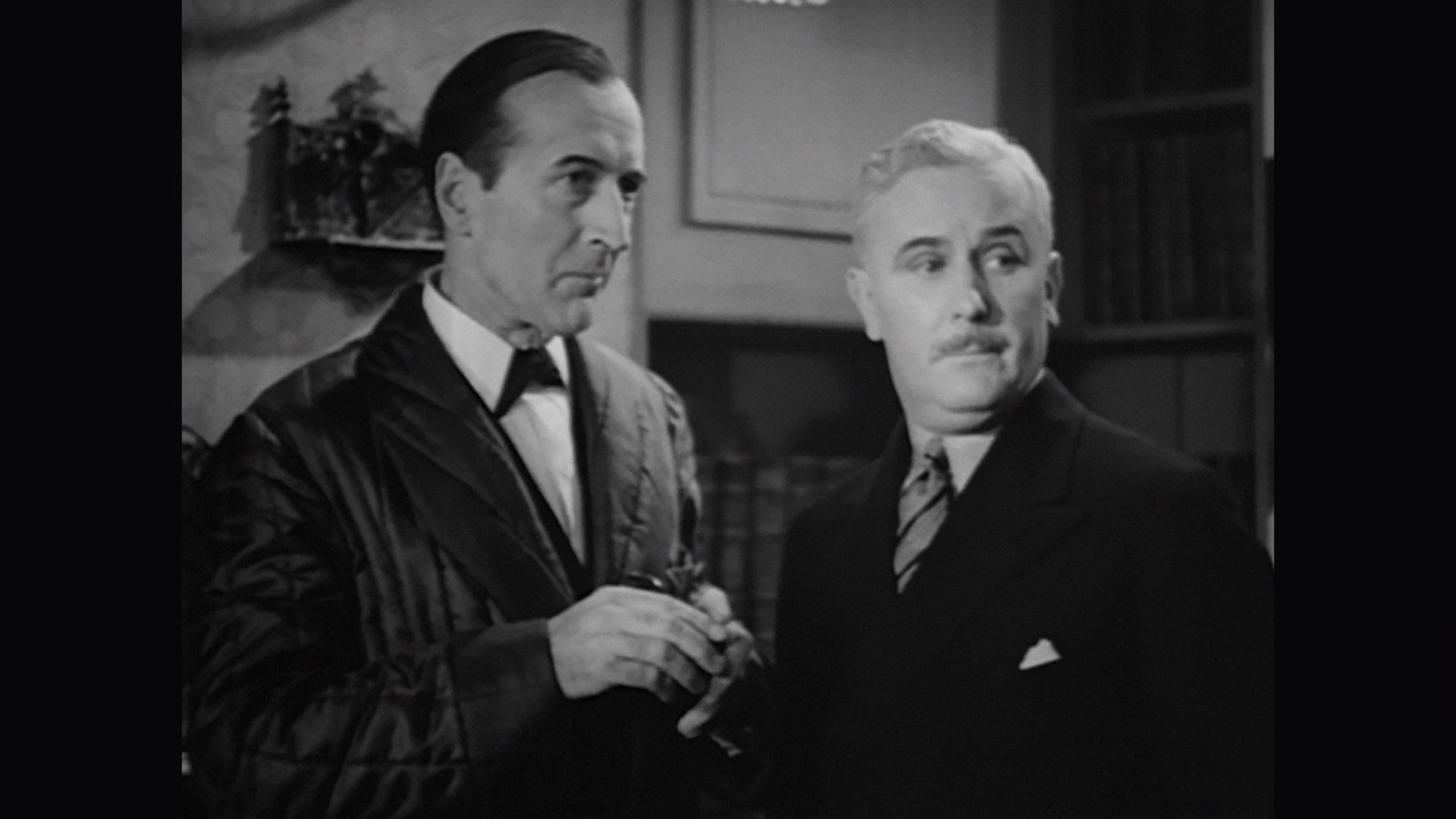 the Fu Manchu films)
the Fu Manchu films) 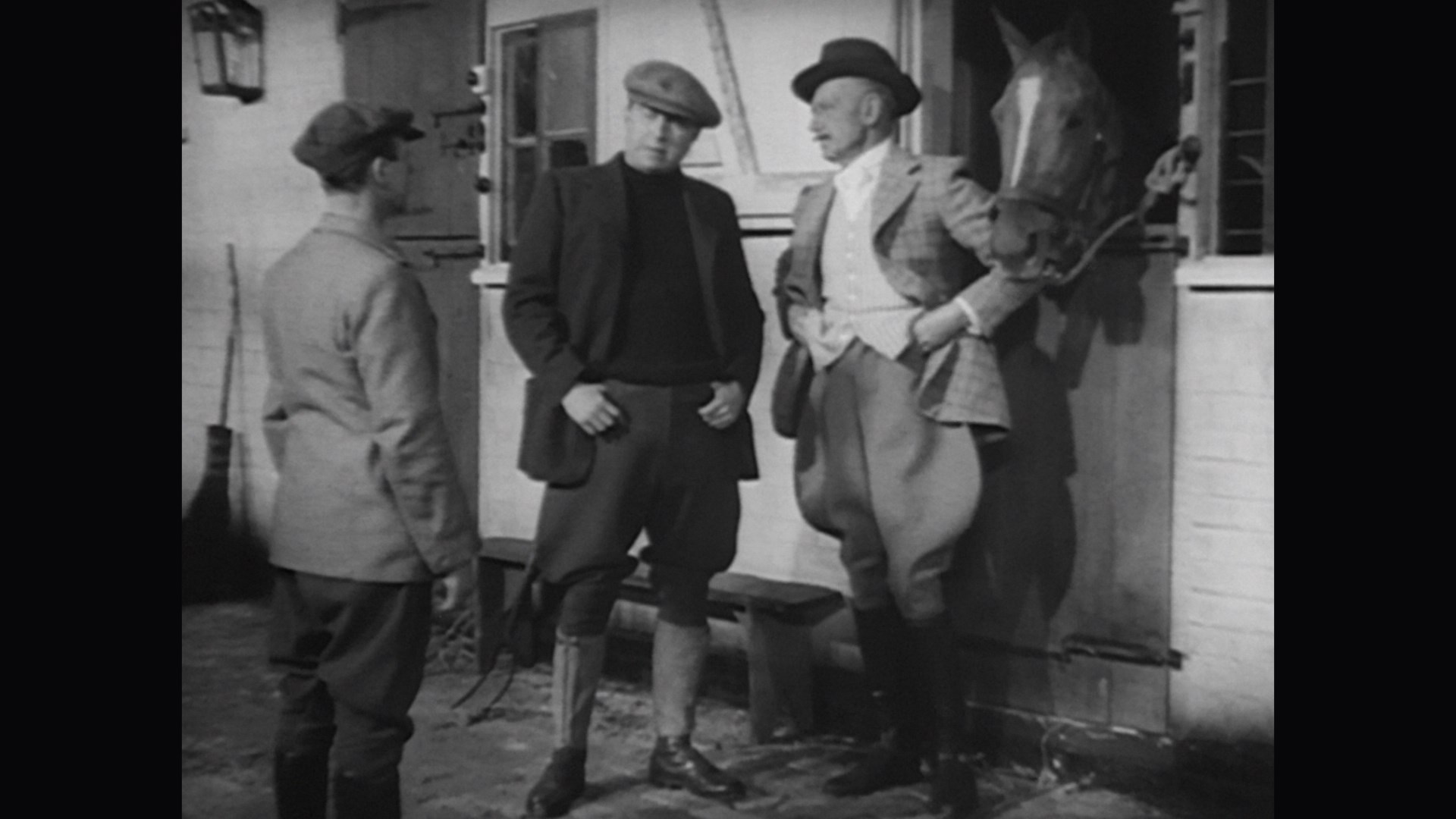 taking a bath.
taking a bath. British
British 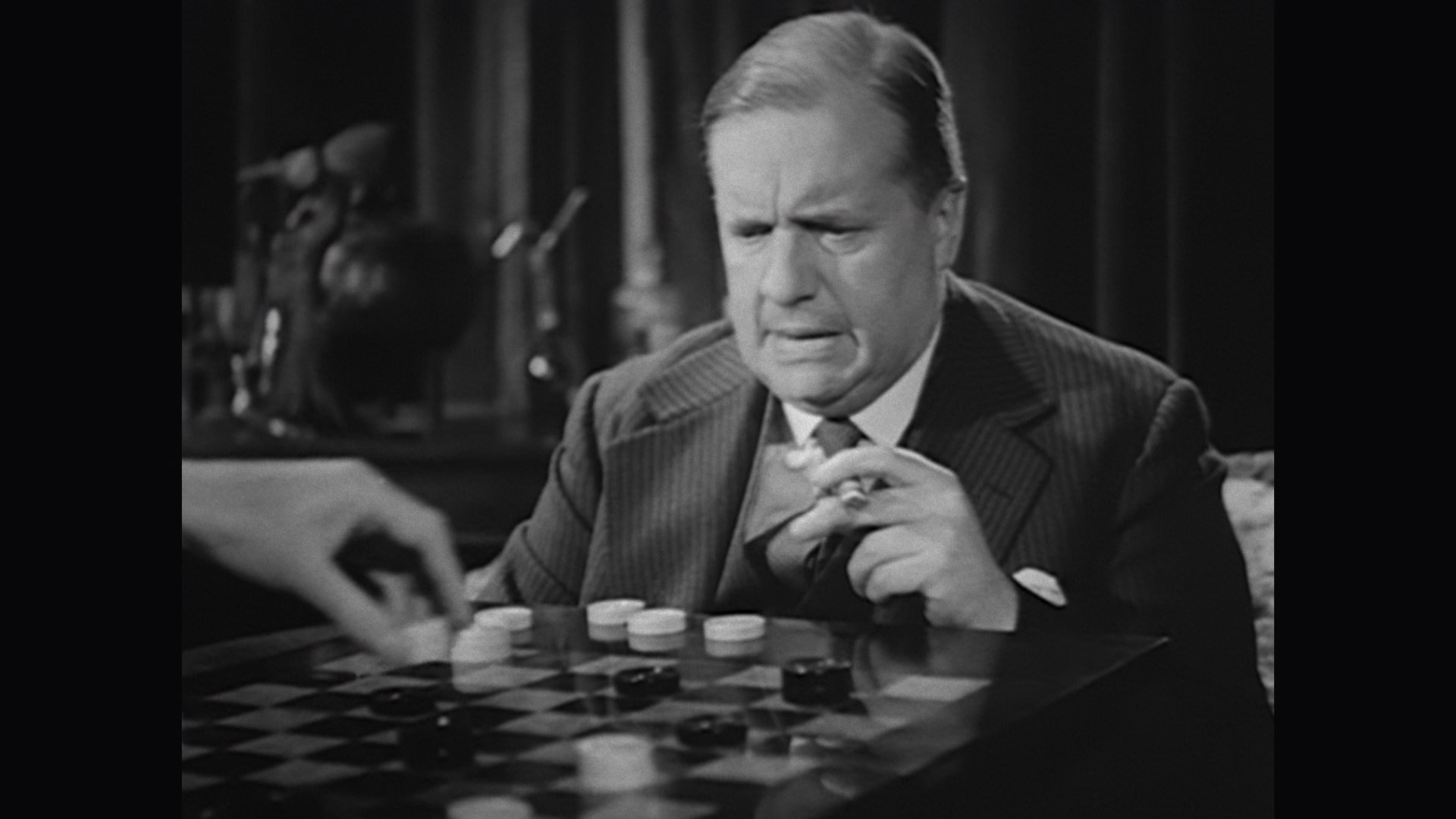 distribution, and more. The Adventures of Sam Sherman Part Three (7m14s) finishes us off with a look at his first experiences with this film and the elements about it that appealed to him, especially the "sci-fi gun." Then Felix the Cat pops up for the 1928 cartoon short Sure Luck Holmes (7m38s), with the immortal feline spending a very spooky night in the woods. The 1913 comedy short Cousins of Sherlocko (9m47s) -- which is in shockingly pristine condition, by the way -- is a cute little diversion about a couple of inept Sherlock wannabes who decide to go after the local pickpocket by... uh, cavorting around in drag. Finally Stradley returns for the final insert booklet essay, covering the tail end of the Wontner Sherlock era and explaining how major distribution changes made it harder for these films to be seen by U.S. audiences.
distribution, and more. The Adventures of Sam Sherman Part Three (7m14s) finishes us off with a look at his first experiences with this film and the elements about it that appealed to him, especially the "sci-fi gun." Then Felix the Cat pops up for the 1928 cartoon short Sure Luck Holmes (7m38s), with the immortal feline spending a very spooky night in the woods. The 1913 comedy short Cousins of Sherlocko (9m47s) -- which is in shockingly pristine condition, by the way -- is a cute little diversion about a couple of inept Sherlock wannabes who decide to go after the local pickpocket by... uh, cavorting around in drag. Finally Stradley returns for the final insert booklet essay, covering the tail end of the Wontner Sherlock era and explaining how major distribution changes made it harder for these films to be seen by U.S. audiences.